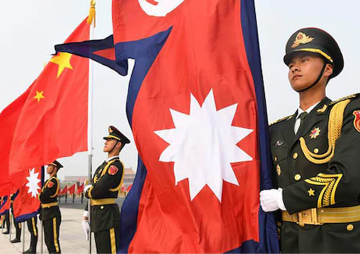
Will India–Australia trade pact further boost their bilateral relationship?
Unlike some other free trade agreements (FTAs) negotiations, the India–Australia bilateral trade negotiations had been going on for more than a decade. It started in 2011 but was suspended in 2015 due to a stalemate on various issues, including Indian market access for Australian dairy products and a liberalised Australian visa regime for Indian professionals.
In June 2020, as part of the Joint Statement on a Comprehensive Strategic Partnership between India and Australia, Prime Ministers Morrison and Modi decided to re-engage on a bilateral Comprehensive Economic Cooperation Agreement (CECA). Compared to the earlier history, a new round of negotiations on the FTA that started in September 2021 has produced fruitful results at a lightning speed. India and Australia signed an interim Economic Cooperation and Trade Agreement (ECTA) on 2 April 2022. Both the countries reaffirmed their commitment to conclude a Comprehensive Economic Cooperation Agreement (CECA) by the end of 2022.
Is strategic interest converging with the economic one?
Apart from being Quad members, India and Australia share another common element of interest. The recent LAC (Line of Actual Control) conflict made the relationship between India and China a tense one, to say the least. Since the Galwan Valley clash of June 2020, India’s China policy is undergoing a change, as part of which India is looking to engage more strongly with like-minded countries in the Indo-Pacific to reduce its reliance on China as an economic partner. In view of this India, Australia and Japan have also started an initiative to seek an alternative and diversify the global supply chain network. Australia is also at loggerheads with China for quite some time. China is the largest trading partner of Australia, but a series of diplomatic spats between these two countries culminated in China officially (and unofficially) imposing sanctions against certain Australian exports, including coal, beef, seafood, wine, and barley. It is a win-win for both partners because it will ensure an uninterrupted supply of key raw materials to Indian industries, while Australia will find a more reliable alternative in India.
China is the largest trading partner of Australia, but a series of diplomatic spats between these two countries culminated in China officially (and unofficially) imposing sanctions against certain Australian exports, including coal, beef, seafood, wine, and barley.
Interestingly, China and Australia are signatories of the mega trade pact RCEP (Regional Comprehensive Economic Partnership). India decided not to join RCEP in November 2019, and Australia was invited to join the Malabar Naval Exercise in 2020. Meanwhile, cracks in the relationship between Beijing and Canberra started appearing. Since then, consensus for a trade pact started gaining momentum in both Australia and India.
What will be the impact on bilateral trade?
The ECTA is the first bilateral trade agreement of India with a developed country in the last decade. The pact will eliminate or lower tariffs on a huge number of goods on both sides, along with pro-active measures to remove non-tariff barriers like technical barriers to trade (TBT) and sanitary and phytosanitary (SPS) restrictions.
Two-way trade between India and Australia increased from US $13.6 billion in 2007 to US $24.3 billion in 2020. The latest Ministry of Commerce and Industry of India data (released in April 2022) show 104.8 percent year-on-year growth in Indian exports to Australia and 99.5 percent year-on-year growth in Australian imports to India. It seems that the signing of the interim agreement has come at an opportune time when the trade momentum between the countries is on a high. Australia’s aim is to make India one of its top three export markets by 2035 and also the third-largest in Asia for Australian investment.
Governments of both countries expect trade in goods to double in five years (after the implementation of the agreement) to US $50 billion. Since India is not part of any significant regional or free-trade bloc, these bilateral FTAs have gained more significance. India would, of course, hope that Australia’s FTA will positively influence other ongoing bilateral trade negotiations with developed countries like the UK, the EU, and Canada.
India can import coal from Australia at a much cheaper rate and this constitutes about 70 percent of India’s imports from Australia and which also attracts 2.5 percent duty.
In spite of healthy growth rates, Australia–India trade volume remains at a lower level, but completion of the FTA and speedy implementation are likely to boost volumes of trade between these countries in near future.
What are the sectors that may benefit?
India’s commerce minister Piyush Goyal has stated that, “India’s manufacturing sector, particularly micro, small and medium enterprises are interested in the Australian market as the agreement unlocks huge opportunities for Indian exports of automobiles, textiles, footwear, and leather products, gems and jewellery, toys and plastic products.”
The ECTA expressed significant commitments to cut tariffs. Australia will make way for zero-duty market access for 96.4 percent value of Indian exports (which constitute 98 percent of tariff lines). India, on the other hand, committed to market access to Australia by eliminating tariffs for more than 85 of Australian goods exports immediately after the initiation of the pact. Access to Australian products will eventually rise to around 91 percent in the next 10 years.
Several labour-intensive Indian exports (which currently attract 4 percent to 5 percent tariff), including textiles, apparels, agriculture and fish products, leather, footwear, furniture and sports goods, jewellery, engineering goods, and selected pharmaceuticals and medical devices, are expected to gain from the immediate duty-free access. Around 113 remaining tariff lines—amounting to 3.6 percent of Indian exports—will be phased out in next five years. India can import coal from Australia at a much cheaper rate and this constitutes about 70 percent of India’s imports from Australia and which also attracts 2.5 percent duty.
Tariff lines on certain Australian raw material exports, like wool, sheep meat, coal, alumina, metallic ores and critical minerals, are slated to be reduced to zero immediately. For agricultural produces like avocados, onions, cherries, shelled pistachios, macadamias, cashews in-shell, blueberries, raspberries, blackberries and currants, tariffs will be eliminated over the next few years. Import duties on Australian wine in India will be significantly slashed, but not eliminated fully.
Indian manufacturers had been unable to utilise full potential of preferential trade in goods. India–Australia CECA is likely to make available crucial Australian raw material and inputs to Indian producers.
India has successfully negotiated protection terms for its dairy sector and sensitive agricultural items like chickpeas, walnut, pistachio nut, wheat, rice, bajra, apple, sunflower oil, and sugar. Within non-agricultural exclusion list, there are products including silver, platinum, jewellery, iron ore, and most of the medical devices.
India will grant market access to Australian single-brand retailing franchises and internet service providers. India also committed to extend the best treatment, as may be provided to any other future trade partner, to key Australian services sectors including education, business and financial services, health, tourism, and travel.
Australia will now extend the length of stay by two to three years for Indian students, with first class honours degree in areas related to science, technology, engineering, mathematics (STEM), and information and communication technology (ICT). Young Indian professionals will now be eligible for participation in working holidays in Australia.
What are the challenges?
Even though overall trade volume between two countries remains at a lower level, latest available data of 2019 in World Bank database show that Australia’s exports share in total merchandise trade in relevant items is 2.21 percent while India’s share is 0.92 percent.
This has been the story for most of the FTAs India signed. Indian manufacturers had been unable to utilise full potential of preferential trade in goods. India–Australia CECA is likely to make available crucial Australian raw material and inputs to Indian producers. However, the extent of final benefit will depend upon the status of future export competitiveness created by Indian industries. Any lapse in attaining those critical production advantages, coming out of this FTA, will negate the future positive benefit of this pact for India.
A strong bilateral cooperation is needed for any trilateral, minilateral cooperative framework to work successfully. Given how India and Australia are actively engaging in these formats as seen with the Quad, the India–Australia–US and Japan–Australia–India trilaterals, the need of the hour for India and Australia is to make this economic pact advantageous to both.
The views expressed above belong to the author(s). ORF research and analyses now available on Telegram! Click here to access our curated content — blogs, longforms and interviews.




 PREV
PREV



